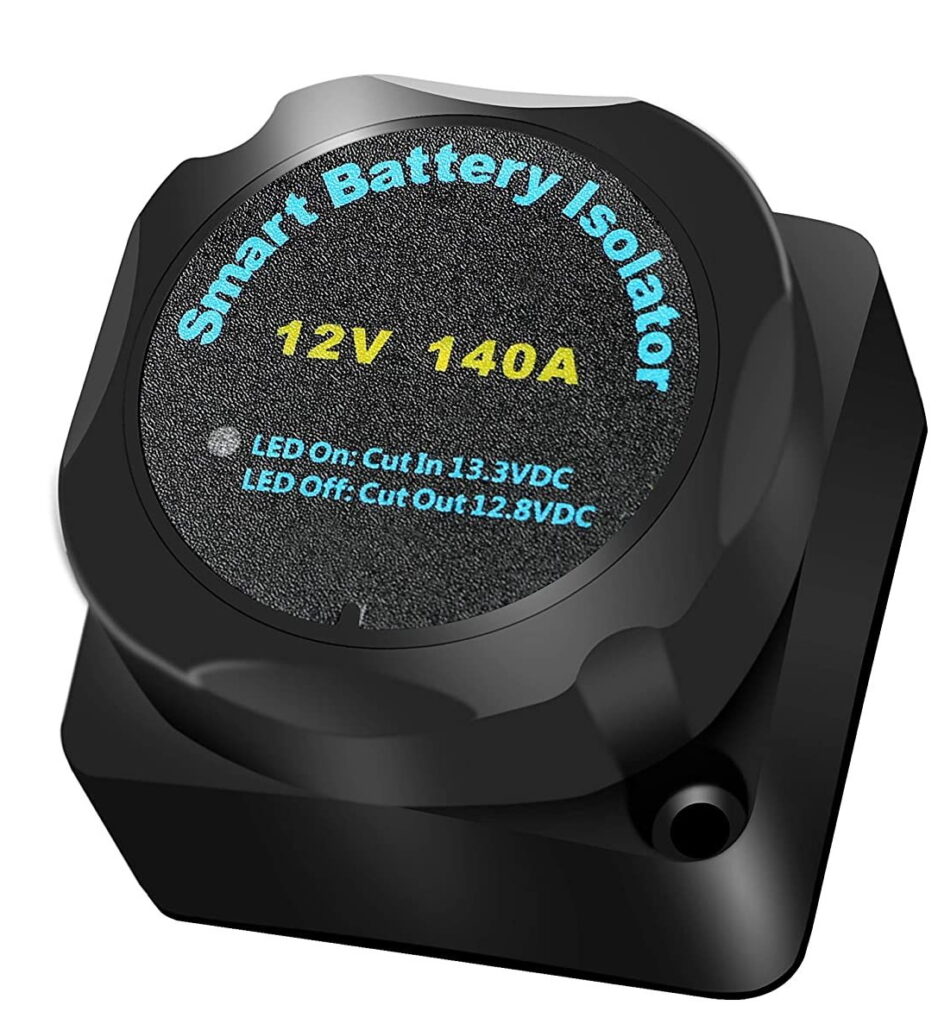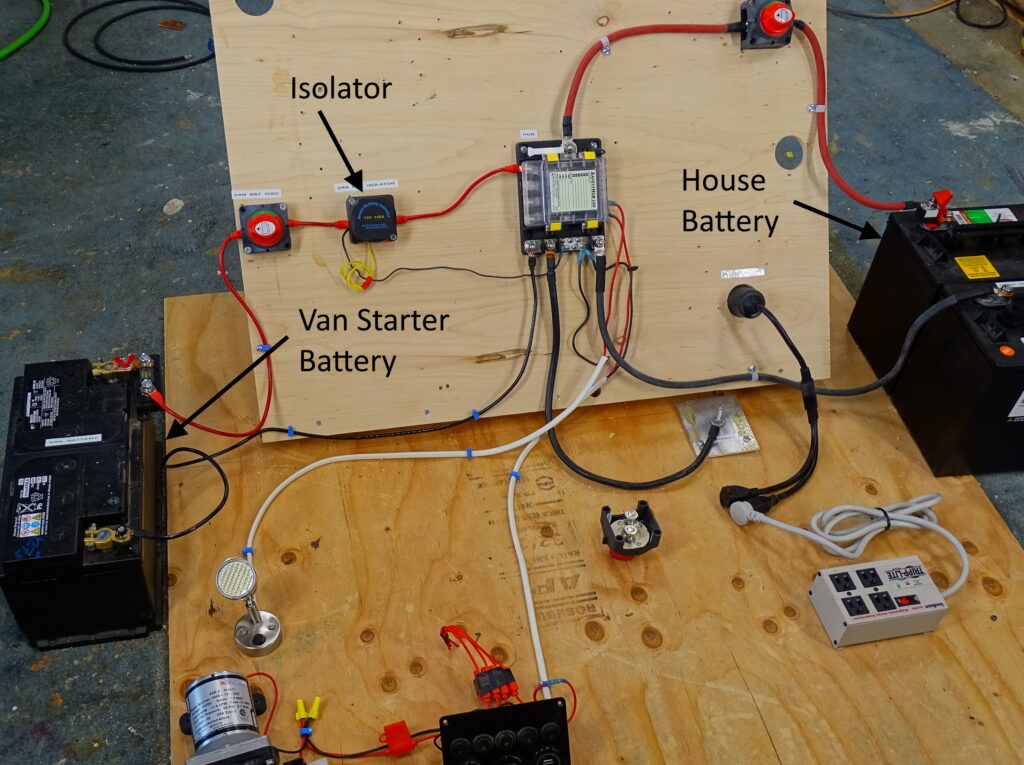The Base System uses a Kisae DC to DC charger between the van alternator and house battery to regulate the charging of the house battery from the alternator. This works well and has some advantages, but costs about $250. This page goes over an alternative that only costs $40, but cannot be used on all vans.
The alternative is a Battery Isolator. The Isolator goes in the wire from the van starter battery (alternator) to the house battery (via the wiring Hub). Its sole function is to disconnect the house battery from from the van charging system except when the van engine is running. The idea is to prevent the house battery loads from draining the van starter battery accidentally. These have been used on camper vans and RVs for decades and are well proven.
The main problem with using an isolator these days is that they are not compatible with smart alternators, and most new vans are coming with smart alternators. A smart alternator basically cuts down the alternator voltage whenever it can to save energy and improve MPG. When it cuts the alternator voltage beyond a point, the Isolator thinks the engine is off and disconnects the house battery from the charging system.
So, you can’t use the isolator if your van has a smart alternator. You can Google smart alternator for ways to test if you van has one.
In addition, if you plan to use Lithium house batteries (now or later), then an Isolator is not recommended as it does not do a regulated multi stage charge of the house battery, and its a good idea to protect your investment in Li batteries with a multistage charger.
If you plan to have solar charging (now or later), than another consideration is that you will have to buy a solar charge controller when you add solar and they run about $100, but since the Kisae DC to DC charger has one built in , this reduces the cost saving for going to an Isolator to about $100.
If you decide to go with an Isolator, I would go with one that has a VSR (Voltage Sensing Relay) as this simplifies the wiring. This is one example….

The Isolator is shown installed on the model board system below. In addition to having the Isolator in the wire between the van starter battery and the Hub, an optional switch is shown to manually cut off charging to the house battery.

The Isolator is easy to hook up. Connect the input terminal to the van battery positive terminal. Connect the output terminal to any of the four high amperage fused connections on the BlueSea Safety Hub as shown in the photo above. AWG 6 wire is good unless you have very long run from the van battery to the Safety Hub – if so size the wire using the BlueSea Circuit Wizard. There does need to be a fuse at or near the van starter battery plus terminal that the Isolator connects to – 80 amps should be good.
Ask questions in the comments if in doubt about this.
If you see any errors or misleading information on this page, or if more information is needed please comment below.
Gary 7/29/22

Why is such a thick wire needed from the battery to the isolator. Does the alternator really push that many amps?
Hi Chris,
It does depend on a lot of things.
Length of the run from alternator area to house battery. This is often a long run, so voltage drop is a concern.
Output and design of the alternator.
Size of the house battery.
As an example if you say the run from van battery to house battery (with isolator in it) is 10 ft each way, alternator current is 40 amps, and you limit voltage drop to 3%, then the Blue Sea Circuit Wizard comes up with #6 – this is mostly to keep the voltage drop to 3%. If you say 10% voltage drop is OK, the wire gauge drops to #10, but 10% is too much.
If your run from house to van battery is short, then you could use a smaller gauge wire – let the Blue Sea Circuit Wizard be your guide.
Gary
Many issues exist when thinking an alternator can charge an AGM house battery. May I suggest instead of the battery isolater one puts a DC-DC charger here? In will not only prevent house to van discharge but actually charge your house battery with precise exact current specifications (set those DIP switches correctly).
Hi Will,
Thanks.
The base system does use a DC to DC charger, and these days, I think this is probably the best way to go.
https://www.buildagreenrv.com/camper-van-electrical-Building-The-Basic-System/
But, if you don’t have a smart alternator (not compatible with that only charges from the alternator), and especially if you are using a $200 set of golf cart batteries, the $210 extra for a DC to DC charger and the extra complexity seem like a not so good deal. There are a million or so RVs out there that have been using just isolators for decades – I just thought I should point out that its an option.
Gary